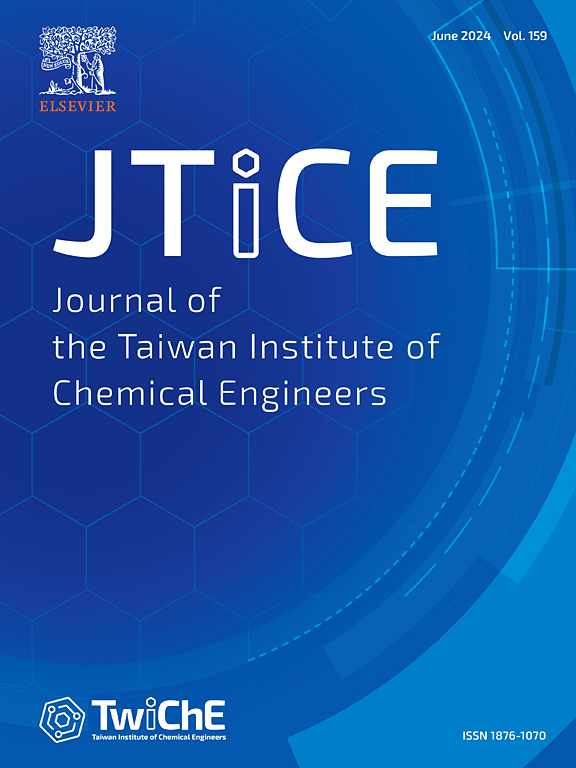Minor Au element effects on phase transformation and tensile strength
IF 5.5
3区 工程技术
Q1 ENGINEERING, CHEMICAL
Journal of the Taiwan Institute of Chemical Engineers
Pub Date : 2025-01-25
DOI:10.1016/j.jtice.2025.105991
引用次数: 0
Abstract
Background
SnBi is an attractive solder owing to its low cost and step-soldering capability. However, its ductility is lower than that of conventional solder such as SnAgCu. Addition of elements to SnBi can help improve its properties. Au is considered an effective way to improve the undercooling and tensile strength of SnBi.
Methods
In this study, a solder joint of Sn56Bi2Au/Cu is reflowed at 160 °C and then subjected to solid–solid reactions from 80 to 130 °C. Fracture morphologies indicate the Au addition increases the joint ductility and reliability.
Significant Findings
The addition of minor Au causes needle-type AuSn4 to disperse in the solder. The (Au,Cu)Sn formed at the interface during the 80 °C solid–solid reaction transforms to (Cu,Au)6Sn5 and Cu3Sn as the temperature increases to 100–130 °C. The formation of intermetallic compounds has a significant effect on the reliability. Au–Sn compounds are extremely important in light-emitting diodes, while Cu–Sn compounds are commonly used as connections for die-attached devices. The aim of this study is to investigate the phase transformations among AuSn, AuSn4, Cu6Sn5, and Cu3Sn. The effects of Au addition on the microstructure and mechanical properties are also investigated.

求助全文
约1分钟内获得全文
求助全文
来源期刊
CiteScore
9.10
自引率
14.00%
发文量
362
审稿时长
35 days
期刊介绍:
Journal of the Taiwan Institute of Chemical Engineers (formerly known as Journal of the Chinese Institute of Chemical Engineers) publishes original works, from fundamental principles to practical applications, in the broad field of chemical engineering with special focus on three aspects: Chemical and Biomolecular Science and Technology, Energy and Environmental Science and Technology, and Materials Science and Technology. Authors should choose for their manuscript an appropriate aspect section and a few related classifications when submitting to the journal online.

 求助内容:
求助内容: 应助结果提醒方式:
应助结果提醒方式:


